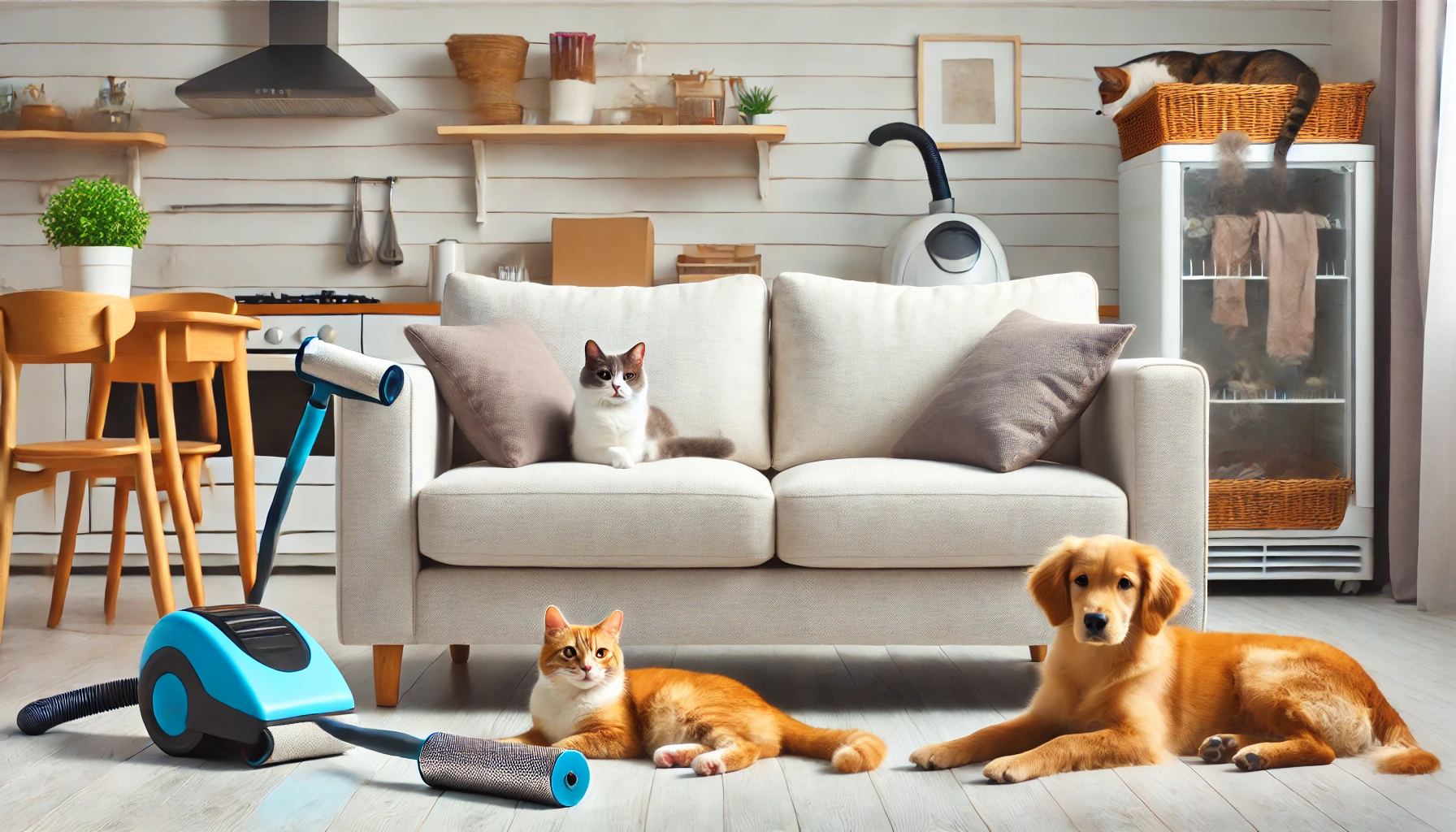Living with pets means accepting that some hair will inevitably find its way onto your furniture, clothes, and other surfaces. While shedding is a natural process for dogs and cats, excessive pet hair can be frustrating to manage and difficult to remove. Fortunately, with the right strategies, you can significantly reduce the amount of pet hair in your home and keep your furniture and clothes looking clean. By combining regular grooming, cleaning routines, and preventative measures, you can enjoy a more fur-free environment.
Groom Your Pet Regularly
Reducing pet hair at the source is one of the most effective ways to minimize shedding in your home.
Brush Your Pet Frequently
Regular brushing removes loose hair before it has a chance to fall onto furniture and clothes. The type of brush you use depends on your pet’s coat:
- For Dogs: Use a slicker brush for long-haired breeds, a bristle brush for short-haired breeds, or an undercoat rake for double-coated breeds.
- For Cats: A grooming glove or a fine-toothed comb works well for short-haired cats, while a slicker brush is ideal for long-haired breeds.
Brush your pet outdoors if possible to keep loose fur from spreading indoors.
Bath Your Pet
Bathing your pet with a gentle, pet-safe shampoo helps loosen and remove excess fur. Follow up with thorough brushing after the bath to catch any remaining loose hairs. Avoid over-bathing, as it can dry out your pet’s skin and lead to more shedding.
Use Deshedding Tools
Specialized deshedding tools are designed to remove the undercoat and reduce shedding significantly. Products like the FURminator can help manage heavy shedding, especially during seasonal coat changes.
Protect Furniture from Pet Hair
Keeping your furniture free of pet hair requires a combination of protective measures and regular cleaning.
Use Furniture Covers
Covering your furniture with washable throws, blankets, or slipcovers provides a barrier between your pet and the upholstery. Opt for materials that are easy to clean and resistant to pet hair, such as microfiber.
Choose Pet-Friendly Fabrics
Some fabrics, like leather and synthetic microfiber, repel pet hair more effectively than others. When purchasing furniture, consider pet-friendly materials that are easier to maintain.
Create Pet-Specific Areas
Encourage your pet to relax in designated spots by providing cozy beds, blankets, or cushions. Reward them for using these areas, and place them on the furniture your pet frequents most.
Vacuum Frequently
Use a vacuum cleaner with strong suction and pet hair-specific attachments to clean furniture regularly. Pay special attention to crevices, where hair tends to accumulate.
Keep Clothes Hair-Free
Pet hair on clothes can be particularly frustrating, but there are simple tricks to minimize it.
Use a Lint Roller
A lint roller is one of the quickest ways to remove pet hair from clothing. Keep one near your closet or door for easy touch-ups before heading out.
Wash Clothes Correctly
Before washing pet hair-covered clothes, place them in the dryer on a no-heat cycle for 10 minutes. This loosens the fur, which will collect in the lint trap. Then wash the clothes as usual. Add white vinegar to the rinse cycle to further loosen pet hair.
Use Dryer Sheets
Tossing a dryer sheet into the dryer can reduce static and help remove pet hair from clothing. Alternatively, use a specialized pet hair remover ball designed for use in dryers.
Keep Clothes Covered
Store clothes in closets or garment bags to protect them from accumulating hair. Avoid leaving clothing on furniture or other surfaces where your pet sheds.
Regular Cleaning Routines
Consistent cleaning helps manage pet hair in your home and prevents it from building up on surfaces.
Vacuum Floors
Vacuum floors regularly, focusing on high-traffic areas and spaces where your pet spends the most time. For carpets, use a vacuum with a HEPA filter and a rotating brush to lift embedded pet hair.
Mop Hard Floors
Use a microfiber mop or a damp cloth to pick up pet hair from hard floors. Avoid sweeping, as it can push hair around instead of collecting it.
Clean Bedding and Curtains
Wash your pet’s bedding and any fabric items, like curtains or couch covers, on a regular basis to remove accumulated hair. Shake them outside before washing to reduce the amount of hair in your washing machine.
Wipe Down Surfaces
Use a damp cloth, microfiber cloth, or rubber glove to wipe down surfaces like shelves, counters, and tables. These tools attract pet hair and make cleanup more efficient.
Prevent Hair from Spreading
Taking steps to contain pet hair helps reduce its spread throughout your home.
Use Air Purifiers
Air purifiers with HEPA filters can trap pet hair and dander, improving air quality and reducing the amount of fur that settles on surfaces.
Groom Your Pet in One Area
Designate a specific area for grooming your pet to contain loose hair. Lay down a towel or mat to catch the fur and make cleanup easier.
Regularly Clean Your Pet’s Favorite Spots
Vacuum and wipe down areas where your pet spends the most time, such as their bed or favorite corner of the couch. Keeping these spots clean prevents hair from spreading to other parts of the house.
Keep Doors Closed
Restrict your pet’s access to certain rooms, like bedrooms or closets, to minimize hair buildup in those areas.
Address Seasonal Shedding
Many pets shed more during seasonal changes, particularly in spring and fall. During these times, increase the frequency of grooming and cleaning to manage the extra hair.
Conclusion
Managing pet hair on furniture and clothes doesn’t have to be a constant struggle. By grooming your pet regularly, protecting surfaces, and maintaining a consistent cleaning routine, you can significantly reduce the amount of hair in your home. Combining these strategies with preventative measures ensures your living space remains clean and comfortable, allowing you to enjoy the companionship of your furry friend without the hassle of excessive shedding.

